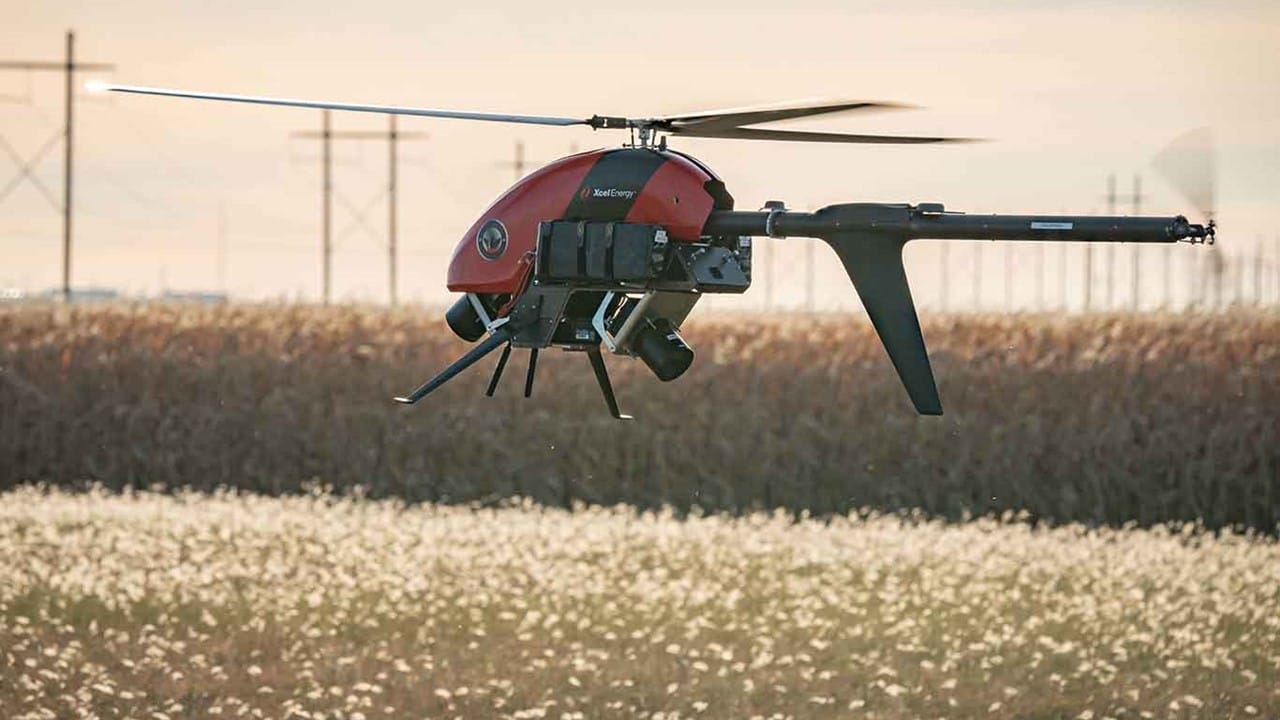In this whitepaper, learn what to consider and how you can realize the benefits of the new generation of infrastructure inspections and increase the resiliency of your power grid.
How accurate would you say your substation asset data is? Are you confident that the asset data is of high quality?
Even if the quality is good today, data quality needs to be maintained. Hear lessons learned from two utilities; how they started their digitalization journey for different reasons, and how they have uplifted their substation asset data, resulting in lowered operational costs due to the improved accuracy, quality, and accessibility of data.
Watch this webinar to learn how to improve poor quality and incomplete data for your substations and how you can achieve lower costs and a much faster response to faulty assets by relying on accurate, up-to-date data.
Other Webinars You May Like
-
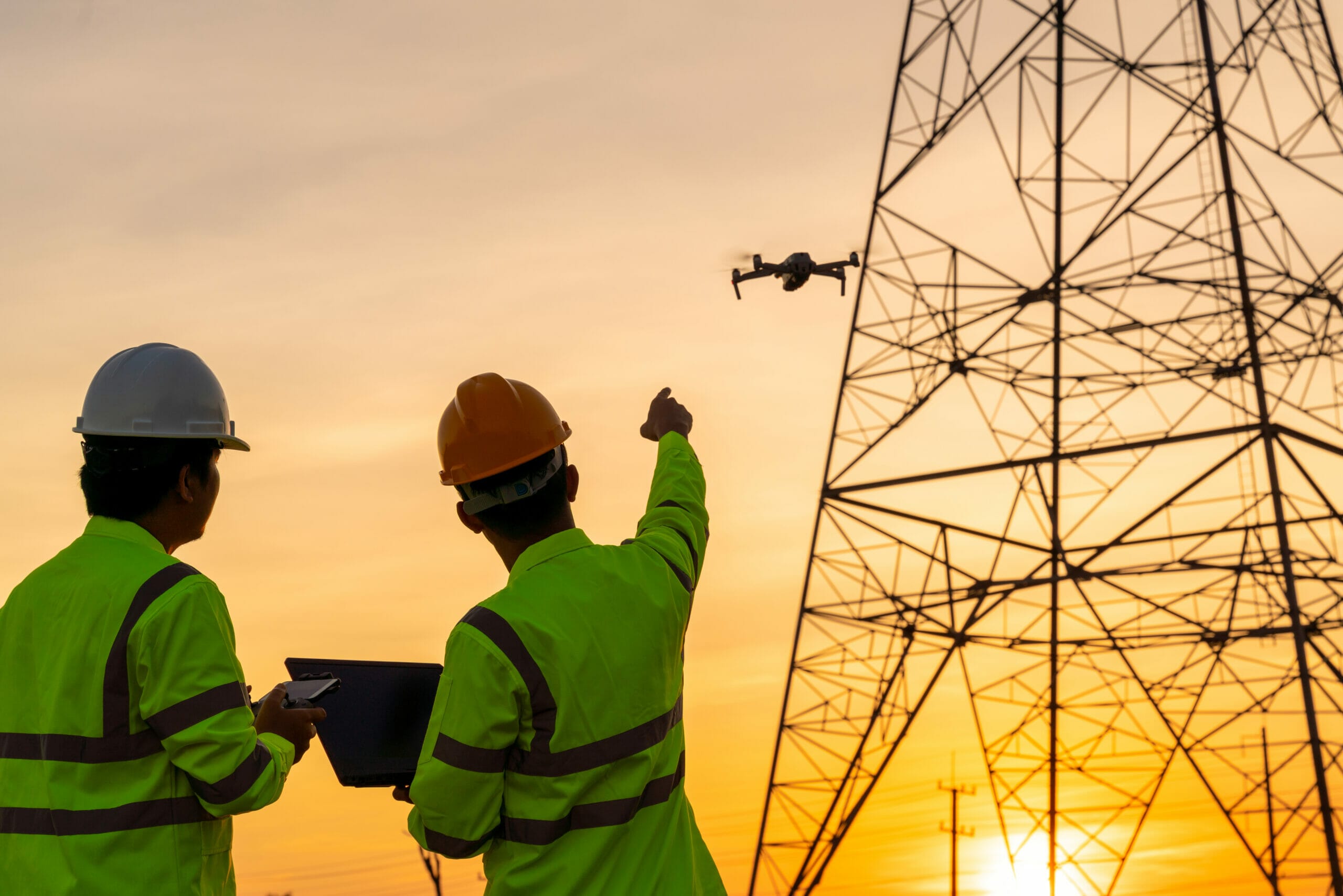 Webinars
WebinarsWatch our webinar – How AI & Virtual inspections changed operations at Xcel Energy
Inspecting transmission and distribution assets is tremendously time- and labor-intensive for utilities. Watch this webinar to learn the benefits and requirements of using a virtual inspection program and what AI is and isn’t capable of doing.May 12th 2023 -
 Webinars
WebinarsWatch our webinar – Virtual T&D line inspections – Are they practical, scalable and cost-effective?
Watch this session to:
– Learn what virtual inspections are.
– Discover how they fit into utilities’ current processes and how they can be scaled.
– Uncover virtual inspection pitfalls and benefits that can be achieved.April 20th 2022 -
 Webinars
WebinarsWatch our webinar – How virtual inspections support capital projects
Watch our very engaging on-demand webinar with Xcel Energy on how AI plays a key role in the next generation of electrical infrastructure inspections.October 27th 2022 -
 Webinars
WebinarsSign up to our webinar on AI and Machine Learning
In a webinar April 9, Chief Analytics Officer at eSmart Systems, Davide Roverso, will present how AI and deep neural network technology revolutionize traditional industriesApril 20th 2022
How accurate would you say your substation asset data is? Are you confident that the asset data is of high quality?
Even if the quality is good today, data quality needs to be maintained. Hear lessons learned from two utilities; how they started their digitalization journey for different reasons, and how they have uplifted their substation asset data, resulting in lowered operational costs due to the improved accuracy, quality, and accessibility of data.
Watch this webinar to learn how to improve poor quality and incomplete data for your substations and how you can achieve lower costs and a much faster response to faulty assets by relying on accurate, up-to-date data.
Other Webinars You May Like
-
 Webinars
WebinarsWatch our webinar – How AI & Virtual inspections changed operations at Xcel Energy
Inspecting transmission and distribution assets is tremendously time- and labor-intensive for utilities. Watch this webinar to learn the benefits and requirements of using a virtual inspection program and what AI is and isn’t capable of doing.May 12th 2023 -
 Webinars
WebinarsWatch our webinar – Virtual T&D line inspections – Are they practical, scalable and cost-effective?
Watch this session to:
– Learn what virtual inspections are.
– Discover how they fit into utilities’ current processes and how they can be scaled.
– Uncover virtual inspection pitfalls and benefits that can be achieved.April 20th 2022 -
 Webinars
WebinarsWatch our webinar – How virtual inspections support capital projects
Watch our very engaging on-demand webinar with Xcel Energy on how AI plays a key role in the next generation of electrical infrastructure inspections.October 27th 2022 -
 Webinars
WebinarsSign up to our webinar on AI and Machine Learning
In a webinar April 9, Chief Analytics Officer at eSmart Systems, Davide Roverso, will present how AI and deep neural network technology revolutionize traditional industriesApril 20th 2022
How accurate would you say your substation asset data is? Are you confident that the asset data is of high quality?
Even if the quality is good today, data quality needs to be maintained. Hear lessons learned from two utilities; how they started their digitalization journey for different reasons, and how they have uplifted their substation asset data, resulting in lowered operational costs due to the improved accuracy, quality, and accessibility of data.
Watch this webinar to learn how to improve poor quality and incomplete data for your substations and how you can achieve lower costs and a much faster response to faulty assets by relying on accurate, up-to-date data.
Other Webinars You May Like
-
 Webinars
WebinarsWatch our webinar – How AI & Virtual inspections changed operations at Xcel Energy
Inspecting transmission and distribution assets is tremendously time- and labor-intensive for utilities. Watch this webinar to learn the benefits and requirements of using a virtual inspection program and what AI is and isn’t capable of doing.May 12th 2023 -
 Webinars
WebinarsWatch our webinar – Virtual T&D line inspections – Are they practical, scalable and cost-effective?
Watch this session to:
– Learn what virtual inspections are.
– Discover how they fit into utilities’ current processes and how they can be scaled.
– Uncover virtual inspection pitfalls and benefits that can be achieved.April 20th 2022 -
 Webinars
WebinarsWatch our webinar – How virtual inspections support capital projects
Watch our very engaging on-demand webinar with Xcel Energy on how AI plays a key role in the next generation of electrical infrastructure inspections.October 27th 2022 -
 Webinars
WebinarsSign up to our webinar on AI and Machine Learning
In a webinar April 9, Chief Analytics Officer at eSmart Systems, Davide Roverso, will present how AI and deep neural network technology revolutionize traditional industriesApril 20th 2022

How accurate would you say your substation asset data is? Are you confident that the asset data is of high quality?
Even if the quality is good today, data quality needs to be maintained. Hear lessons learned from two utilities; how they started their digitalization journey for different reasons, and how they have uplifted their substation asset data, resulting in lowered operational costs due to the improved accuracy, quality, and accessibility of data.
Watch this webinar to learn how to improve poor quality and incomplete data for your substations and how you can achieve lower costs and a much faster response to faulty assets by relying on accurate, up-to-date data.
Other Webinars You May Like
-
 Webinars
WebinarsWatch our webinar – How AI & Virtual inspections changed operations at Xcel Energy
Inspecting transmission and distribution assets is tremendously time- and labor-intensive for utilities. Watch this webinar to learn the benefits and requirements of using a virtual inspection program and what AI is and isn’t capable of doing.May 12th 2023 -
 Webinars
WebinarsWatch our webinar – Virtual T&D line inspections – Are they practical, scalable and cost-effective?
Watch this session to:
– Learn what virtual inspections are.
– Discover how they fit into utilities’ current processes and how they can be scaled.
– Uncover virtual inspection pitfalls and benefits that can be achieved.April 20th 2022 -
 Webinars
WebinarsWatch our webinar – How virtual inspections support capital projects
Watch our very engaging on-demand webinar with Xcel Energy on how AI plays a key role in the next generation of electrical infrastructure inspections.October 27th 2022 -
 Webinars
WebinarsSign up to our webinar on AI and Machine Learning
In a webinar April 9, Chief Analytics Officer at eSmart Systems, Davide Roverso, will present how AI and deep neural network technology revolutionize traditional industriesApril 20th 2022
How accurate would you say your substation asset data is? Are you confident that the asset data is of high quality?
Even if the quality is good today, data quality needs to be maintained. Hear lessons learned from two utilities; how they started their digitalization journey for different reasons, and how they have uplifted their substation asset data, resulting in lowered operational costs due to the improved accuracy, quality, and accessibility of data.
Watch this webinar to learn how to improve poor quality and incomplete data for your substations and how you can achieve lower costs and a much faster response to faulty assets by relying on accurate, up-to-date data.
Other Webinars You May Like
-
 Webinars
WebinarsWatch our webinar – How AI & Virtual inspections changed operations at Xcel Energy
Inspecting transmission and distribution assets is tremendously time- and labor-intensive for utilities. Watch this webinar to learn the benefits and requirements of using a virtual inspection program and what AI is and isn’t capable of doing.May 12th 2023 -
 Webinars
WebinarsWatch our webinar – Virtual T&D line inspections – Are they practical, scalable and cost-effective?
Watch this session to:
– Learn what virtual inspections are.
– Discover how they fit into utilities’ current processes and how they can be scaled.
– Uncover virtual inspection pitfalls and benefits that can be achieved.April 20th 2022 -
 Webinars
WebinarsWatch our webinar – How virtual inspections support capital projects
Watch our very engaging on-demand webinar with Xcel Energy on how AI plays a key role in the next generation of electrical infrastructure inspections.October 27th 2022 -
 Webinars
WebinarsSign up to our webinar on AI and Machine Learning
In a webinar April 9, Chief Analytics Officer at eSmart Systems, Davide Roverso, will present how AI and deep neural network technology revolutionize traditional industriesApril 20th 2022
The project, completed in 2021, focused on hardware and defects identification. The project looked at cotter pins, with an emphasis on loose and upside-down cotter pins. The project was able to automatically detect over 11,000 total and successfully identify 781 upside-down pins within a few seconds. The project enabled the public utility’s maintenance engineers to efficiently locate the 2-inch upside-down cotter pins on up to 100 feet high towers and assess their conditions. The outcome of the project is an increase in powerline safety, field worker safety, and, as result, community safety. The case-study described below demonstrates the potential of virtual powerline inspections in enhancing community safety.
Introduction
Multiple large-scale wildfires are reported in the US every year. Such events cost tens of billions of dollars in direct costs such as property loss and damage and indirect costs such as long-term health exposures, market loss, and non-collectable taxes, etc[1]. The consequences of such events can be disastrous from a human, material, and environmental perspective.
Defects in the power grid can cause wildfires; active causes can include a tree or branch falling over a powerline and sparking a wildfire. Triggered material or old powerline components can generate arcs or sparks, and under dry weather conditions and with dry surrounding vegetation, can lead to disastrous and hard to control wildfires.

To minimize the risk of wildfires caused by power grid issues, it is important to ensure conductors do not encounter any foreign objects like trees, other conductors, or the ground. This can only be achieved by properly managing vegetation in areas surrounding powerlines and by sufficiently keeping conductors separate from each other. Spacers and cotter pins, specifically, play a critical role in keeping conductors separated. Spacers keep conductors away from each other, while cotter pins hold the parts in transmission towers in place.
Cotter pins, however, could wear out and loosen over time. A loose and upside-down cotter pin is more likely to slip, becoming unsafe and increasing the chance of conductor failure and the probability of generating an arc flash touching their surroundings. Therefore, a main focus of the efforts led by the public utility to minimize the chance of wildfires is the management and maintenance of cotter pins specifically. As they are more likely to be upside-down than loose, the public utility decided to first assess the number of upside-down cotter pins on their grid. However, manually identifying the orientation of cotter pins is a tedious and resource-consuming task, as there can be as many as 50 2-inch cotter pins on each lattice tower, and the grid in this case includes over 1000 lattice towers.
The new approach
Both the public utility and the engineering and construction company defined the inspection process based on the required scope and accessibility of each structure. eSmart Systems shared their expertise to support that process definition and provided access to Grid Vision, a virtual inspection solution for power grids, enabling professionals to inspect powerlines from the office. Virtual inspection is a new approach to conducting powerline inspections by leveraging the power of automation, smart algorithms, and user-friendly interfaces to facilitate the work of the professionals analyzing the status of the infrastructure. Virtual inspections are also supported with artificial intelligence (AI) to automatically and promptly identify all the components of a power grid, as well as to detect various failures in the grid. With the application of such technologies, the software was able to identify 781 instances of upside-down cotter pins out of 11,000 cotter pin crops, within seconds (Figure 1).
Figure 1: Examples of an upside-down cotter pin automatically detected in the grid.

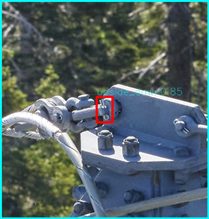
By associating those findings with information of the tower on which the upside-down cotter pins were located, the public utility could identify which towers required attention instantly. This approach has improved the efficiency and accuracy of identifying upside-down cotter pins and improved safety by having line workers only climbing structures when needed.
The utility also looked at other types of key components and their failure modes (flashed insulators, woodpecker damage on wooden transmission towers, rust on lattice towers, etc.) that could be identified utilizing this new approach for a proactive maintenance of powerlines. C-hooks and shackles, which are used for affixing insulators to brackets attached to crossarms, are particularly important components to look at in this context. The lattice towers are over 50 years old. Nonetheless, the virtual detection system was able to identify over 25,000 crops of C-hooks and shackles on the images captured during the inspection and very little wear was detected.
Figure 2: Examples of (a) a c-hook in good condition, (b) very limited level of wear seen on c-hooks during the project and (c) a shackle, highlighting the general good condition of those components in the grid.
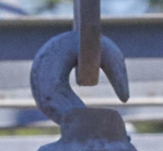
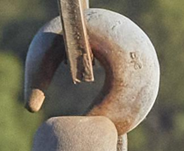

Utilities are constantly looking for innovative ways to improve safety inspection and grid maintenance. This project has demonstrated that well-designed solutions supported by AI are game-changing tools, making inspection easier, more efficient and safer. The collaborative AI approach was instrumental to ensuring the correct components were identified and defects detected. The construction company’s review of the results from eSmart Systems’ Grid Vision solution ensured that high quality inspection standards were met and illustrated how utilities and engineering companies can benefit from virtual inspection tools.
The success of this program demonstrates how proactive actions can be implemented to enhance power grid management efficiency, and proves that smart solutions could help prevent wildfires, in addition to illustrating numerous other advantages, such as new quality assessment possibilities, defect detection standardization, and increased trust in data.
Contact us today and see how Grid Vision is transforming the way the world’s leading energy providers inspect and maintain critical infrastructure.
[1]https://www.nfpa.org/News-and-Research/Publications-and-media/NFPA-Journal/2020/November-December-2020/Features/Wildfire
Zeina Othman from Mälardalens University in Sweden is working in partnership with eSmart Systems on her thesis “Re-designing Organizational Routines in the Echo of AI Algorithms”. The overall objective of this thesis is to develop an understanding of how organizations need to re-design and influence processes when introducing and deploying Artificial Intelligence (AI).
eSmart Systems has been working with AI within our Grid Vision® solution for over 10 years, as a co-pilot for conducting virtual inspection of transmission and distribution grids through a process we call Collaborative-AI. We are working with over 50 utilities globally in supporting their journey to virtual inspections using Grid Vision.
Technology has a huge impact on large organizations in terms of processes, adoption, and change management, and we are thrilled to partner with Zeina to explore this journey with one of our key European customers.
Stayed tuned to learn more about Zenia’s work by signing up to our newsletter here: GridVision.com/newsletter
About Zeina Othman
Zeina Othman studies and teaches international project management at Mälardalens University in Sweden. Prior to her Ph.D. studies, Zeina worked in project management with the UN and non-governmental organizations in Jordan including USAID and Jordan River Foundation. She also worked in Abu Dhabi/UAE for Accenture and Lockheed Martin Global Inc.


Come by our booth at E-world 2023 and witness the power of Grid Vision®
eSmart Systems is a leading provider of artificial intelligence (AI)-powered solutions for the inspection and maintenance of critical infrastructure. Our Grid Vision solution provides a data-driven and condition-based approach to infrastructure inspections and asset management.
Grid Vision is transforming the way the world’s leading energy providers inspect and maintain critical infrastructure.
Come by our booth #610 in hall 5 at E-world and explore how we are working with utilities globally to improve their inspections and asset data.

Come by our booth at E-world 2023 and witness the power of Grid Vision®
eSmart Systems is a leading provider of artificial intelligence (AI)-powered solutions for the inspection and maintenance of critical infrastructure. Our Grid Vision solution provides a data-driven and condition-based approach to infrastructure inspections and asset management.
Grid Vision is transforming the way the world’s leading energy providers inspect and maintain critical infrastructure.
Come by our booth #610 in hall 5 at E-world and explore how we are working with utilities globally to improve their inspections and asset data.


